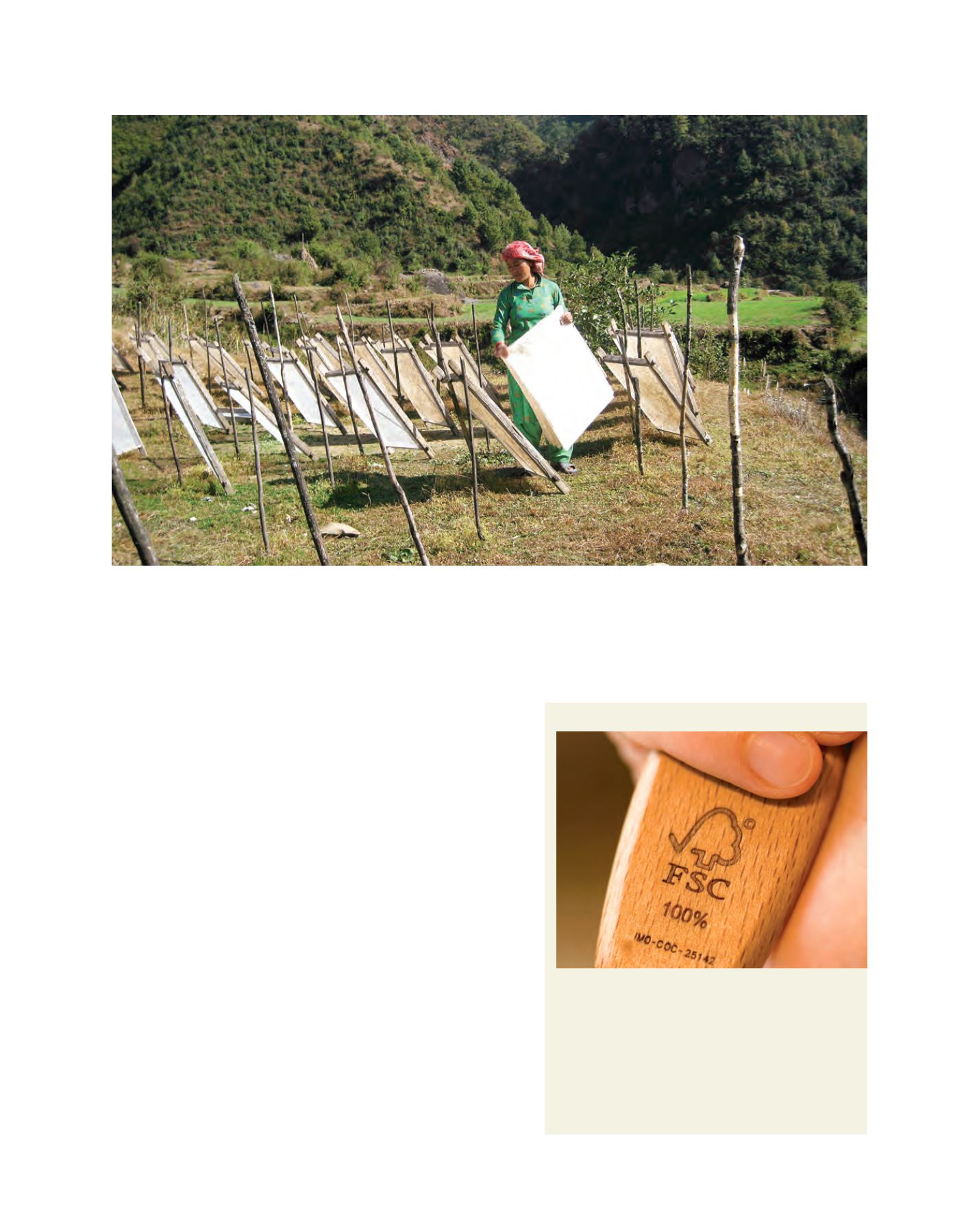

[
] 200
This wide range of stakeholders working with FSC
demonstrates the strong political and economic forces
that endorse and promote the FSC system globally.
tracked from the forest, through production processes to retailers
and consumers. Once they achieve certification, each certificate
holder is checked at least once a year to make sure they continue to
comply with the FSC requirements.
To ensure the certification bodies are competent, they are assessed
against an extensive set of rules and procedures by Accreditation
Services International, who manage the FSC accreditation
programme. Only accredited certification bodies are authorized to
certify against FSC standards.
In its 18-year history, FSC has achieved global importance. By
2011, over 145 million hectares of forests had been certified to FSC
standards in over 80 countries around the world: this is equivalent
to roughly 7 per cent of the world’s production forests. Importantly,
22,000 companies working in the wood product supply chain in
105 countries have also achieved FSC chain of custody certification,
entitling them to use the FSC trademarks and to sell FSC-certified
materials.
This unprecedented growth in certified forest area and supply
chain participation is a direct response to market demand for FSC
certified products. FSC certification provides economic benefits
for forest owners and managers, local communities and companies
in the supply chain. Demand is largely driven by the responsible
procurement practices implemented by many leading companies
around the world including Kimberly-Clark, Tetra Pak, Penguin
and HSBC, along with retailers such as Ikea, Home Depot, Marks
& Spencer and Kingfisher. Many governments around the world
support FSC certification. Uniquely, FSC is also the only interna-
tionally recognized standard-setting organization for responsible
forest management supported by leading global environmental
organizations like WWF and Greenpeace.
FSC principles for forest stewardship
1. Compliance with laws and FSC principles
2. Tenure and use rights and responsibilities
3. Indigenous peoples’ rights
4. Community relations and workers’ rights
5. Multiple benefits from the forest
6. Assessment of environmental impact
7. Management planning
8. Monitoring and assessment of management impacts
9. Maintenance of high conservation value forests
10. Responsible management of plantations
Handmade paper sheets in a community enterprise, Dolakha, Nepal
Image: ANSAB, Nepal
















